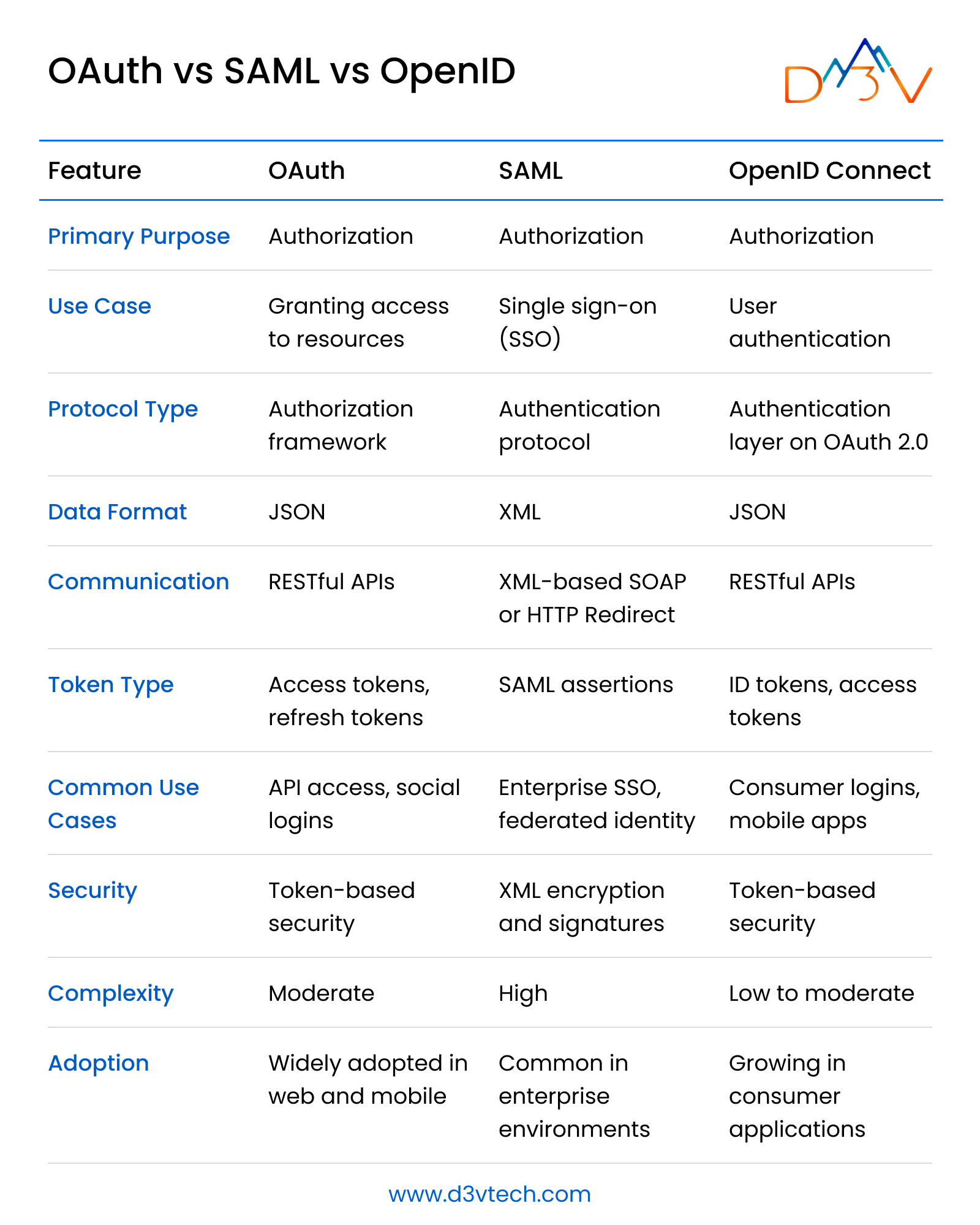In today’s digital world, authentication and authorization are critical components of online security. Whether you’re logging into your favorite app, accessing a cloud service, or signing in to a corporate network, protocols like OAuth, SAML, and OpenID play a pivotal role in ensuring secure access. But what exactly are these protocols, and how do they differ? If you’ve ever found yourself confused about OAuth vs SAML vs OpenID, you’re not alone. In this article, we’ll break down each protocol, explain their use cases, and provide a clear comparison to help you understand their differences.
What Are OAuth, SAML, and OpenID?
Before diving into the differences, let’s start with a brief overview of each protocol:
1. OAuth (Open Authorization)
OAuth is an authorization framework that allows third-party applications to access user data without exposing their credentials. It’s commonly used for granting access to resources like email, photos, or social media profiles. For example, when you log into a website using your Google account and grant it access to your Google Drive, OAuth is working behind the scenes.
check out our detailed guide on What Is OAuth Exactly And How Does It Work?
2. SAML (Security Assertion Markup Language)
SAML is an authentication protocol designed for single sign-on (SSO) capabilities. It allows users to log in once and access multiple services without needing to re-enter credentials. SAML is widely used in enterprise environments where employees need seamless access to various internal and external applications.
3. OpenID Connect (OIDC)
OpenID Connect is an authentication layer built on top of OAuth 2.0. It adds identity verification to OAuth’s authorization capabilities, making it easier to authenticate users across different platforms. OpenID Connect is commonly used in consumer-facing applications, such as logging into a website using your Facebook or Google account.
Key Differences Between OAuth, SAML, and OpenID
While OAuth, SAML, and OpenID all deal with authentication and authorization, they serve different purposes and are used in different contexts. Here’s a detailed comparison:

When to Use OAuth, SAML, or OpenID?
Use OAuth When:
- You need to grant third-party applications access to user resources (e.g., allowing an app to access your Google Drive).
- You’re working with APIs and need to manage access tokens.
- Your focus is on authorization rather than authentication.
Use SAML When:
- You’re implementing single sign-on (SSO) for enterprise applications.
- You need to authenticate users across multiple domains or organizations.
- Your environment relies on XML-based standards and requires strong security for authentication.
Use OpenID Connect When:
- You need to authenticate users in consumer-facing applications (e.g., social logins).
- You want a simple, modern protocol built on OAuth 2.0.
- You’re working with mobile apps or web applications that require both authentication and authorization.
How Do OAuth, SAML, and OpenID Work Together?
While these protocols serve different purposes, they can complement each other in certain scenarios. For example:
- OAuth + OpenID Connect: OpenID Connect builds on OAuth 2.0 to provide both authentication and authorization. This combination is ideal for applications that need to verify user identity and grant access to resources.
- SAML + OAuth: In enterprise environments, SAML can handle authentication (SSO), while OAuth manages authorization for accessing specific resources.
Conclusion
OAuth, SAML, and OpenID are powerful protocols that address different aspects of authentication and authorization. Understanding their differences is crucial for implementing the right solution for your needs. Here’s a quick recap:
- OAuth is about authorization and granting access to resources.
- SAML is about authentication and enabling single sign-on for enterprises.
- OpenID Connect combines authentication with OAuth’s authorization capabilities for modern applications.
By choosing the right protocol (or combination of protocols), you can ensure a secure and seamless experience for your users. Whether you’re building a consumer app, managing enterprise systems, or working with APIs, OAuth, SAML, and OpenID each have a role to play in the world of digital identity and access management.
